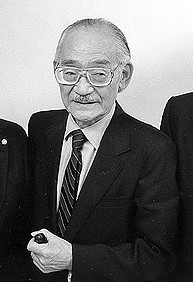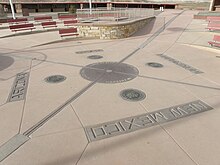The Colorado Portal


WikiProject Colorado
You need not be either an expert or a resident.
You only need an active interest in the Centennial State.
Request an article about a Colorado topic here or volunteer here.
Colorado Events
- Wikimedia US Mountain West Spring 2024 online meeting, Tuesday, May 21, 2024, 8:00-9:00 PM MDT
- Wikimedia US Mountain West Summer 2024 online meeting, Tuesday, August 13, 2024, 8:00-9:00 PM MDT
- Wikimedia US Mountain West Autumn 2024 online meeting, Tuesday, November 12, 2024, 8:00-9:00 PM MST
Previous events:
|
|---|
Colorado events
|
Colorado Facts
- Date admitted to Union: August 1, 1876 (38th State)
- Demonym: Coloradan
- Capital: Denver
- Elected state officers:
- Governor: Jared Polis (D) (2019–)
- Lieutenant Governor: Dianne Primavera (D) (2019–)
- Secretary of State: Jena Griswold (D) (2019–)
- Treasurer: Dave Young (D) (2019–)
- Attorney General: Phil Weiser (D) (2019–)
- Colorado General Assembly:
- Colorado Senate:
- D-23 R-12 (2023–2024}
- Colorado House of Representatives:
- D-46 R-19 (2023–2024}
- Colorado Senate:
- Colorado Supreme Court:
- Brian Boatright, Chief Justice (2021–)
- Monica Márquez (2010-)
- William Hood, III (2014–)
- Richard Gabriel (2015–)
- Melissa Hart (2017–)
- Carlos Samour, Jr (2018–)
- Maria Berkenkotter (2021–)
- U.S. Senators:
- Class 2. John Hickenlooper (D) (2021–)
- Class 3. Michael Bennet (D) (2009–)
- 1. Diana DeGette (D) (1997–)
- 2. Joe Neguse (D) (2019–)
- 3. Lauren Boebert (R) (2021–2025)
- 4. vacant
- 5. Doug Lamborn (R) (2007–2025)
- 6. Jason Crow (D) (2019–)
- 7. Brittany Pettersen (D) (2023-)
- 8. Yadira Caraveo (D) (2023–)
- Total area: 104,094 square miles (269,602 km2) (eighth most extensive state)
- Highest elevation: Mount Elbert 14,440 feet (4,401.2 m) (third highest state)
- Mean elevation: 6,800 feet (2,070 m) (highest state)
- Lowest elevation: Arikaree River 3,317 feet (1,011 m) (highest state)
- Population (2020 census): 5,773,714 (21st most populous state)
- Population density: 55.47 per square mile (21.40 km−2) (39th most densely populated state)
- Number of counties: 64 counties (including two consolidated city and county governments)
- Number of municipalities: 273 municipalities, comprising 2 consolidated city and county governments, 73 cities, and 198 towns
- Time zone: MST=UTC−07, MDT=UTC−06
- USPS code: CO
- ISO 3166 code: US-CO
- Adjacent U.S. states: Wyoming, Nebraska, Kansas, Oklahoma, New Mexico, Arizona, Utah (tied for third most)
- State government website: Colorado.gov
- State tourism website: Colorado.com
State Symbols
Subcategories
Stegosaurus (/ˌstɛɡəˈsɔːrəs/; lit. 'roof-lizard') is a genus of herbivorous, four-legged, armored dinosaur from the Late Jurassic, characterized by the distinctive kite-shaped upright plates along their backs and spikes on their tails. Fossils of the genus have been found in the western United States and in Portugal, where they are found in Kimmeridgian- to Tithonian-aged strata, dating to between 155 and 145 million years ago. Of the species that have been classified in the upper Morrison Formation of the western US, only three are universally recognized: S. stenops, S. ungulatus and S. sulcatus. The remains of over 80 individual animals of this genus have been found. Stegosaurus would have lived alongside dinosaurs such as Apatosaurus, Diplodocus, Camarasaurus and Allosaurus, the latter of which may have preyed on it.
They were large, heavily built, herbivorous quadrupeds with rounded backs, short fore limbs, long hind limbs, and tails held high in the air. Due to their distinctive combination of broad, upright plates and tail tipped with spikes, Stegosaurus is one of the most recognizable kinds of dinosaurs. The function of this array of plates and spikes has been the subject of much speculation among scientists. Today, it is generally agreed that their spiked tails were most likely used for defense against predators, while their plates may have been used primarily for display, and secondarily for thermoregulatory functions. Stegosaurus had a relatively low brain-to-body mass ratio. It had a short neck and a small head, meaning it most likely ate low-lying bushes and shrubs. One species, Stegosaurus ungulatus, is one of the largest known of all the stegosaurians, with the largest known specimens measuring about 7.5 metres (25 ft) long and weighing over 5 metric tons (5.5 short tons). (Full article...)Selected mountain -
Selected biography -
On September 29, 1859, Steele was nominated for Governor of the proposed Territory of Jefferson. On October 24, 1859 the formation of a provisional government was approved and Steele defeated J.H. St. Matthew for Governor.
Governor Steele opened the first session of the provisional territorial legislature on November 7, 1859, with a proclamation:
Let us then enter upon our duties with a determination of spirit that conquers all difficulties: working for the benefit of the whole commonwealth, encouraging moderation and conservation in all our acts, that we may never be ashamed of having taken an humble part of the organization of a Provisional Government for the Territory of Jefferson.
Steele called for the next session to meet on January 23, 1860.
Selected article -

Minoru Yasui (安井稔, Yasui Minoru, October 19, 1916 – November 12, 1986) was an American lawyer from Oregon. Born in Hood River, Oregon, he earned both an undergraduate degree and his law degree at the University of Oregon. He was one of the few Japanese Americans after the bombing of Pearl Harbor who fought laws that directly targeted Japanese Americans or Japanese immigrants. His case was the first case to test the constitutionality of the curfews targeted at minority groups.
Yasui's case made its way to the United States Supreme Court, where his conviction for breaking curfew was affirmed. After internment during most of World War II, he moved to Denver, Colorado in 1944. In Denver, Yasui married and became a local leader in civic affairs, including leadership positions in the Japanese American Citizens League. In 1986, his criminal conviction was overturned by the federal court. (Full article...)Selected image -

National Parks in Colorado
The 23 national parks in Colorado:
- Amache National Historic Site
- Arapaho National Recreation Area
- Bent's Old Fort National Historic Site
- Black Canyon of the Gunnison National Park
- Browns Canyon National Monument
- Camp Hale-Continental Divide National Monument
- Canyons of the Ancients National Monument
- Chimney Rock National Monument
- Colorado National Monument
- Continental Divide National Scenic Trail
- Curecanti National Recreation Area
- Dinosaur National Monument
- Florissant Fossil Beds National Monument
- Great Sand Dunes National Park and Preserve
- Hovenweep National Monument
- Mesa Verde National Park and World Heritage Site
- Old Spanish National Historic Trail
- Pony Express National Historic Trail
- Rocky Mountain National Park
- Sand Creek Massacre National Historic Site
- Santa Fe National Historic Trail
- Yucca House National Monument
Interesting facts-

- The Four Corners is the only place where four U.S. states meet.
- Native peoples, Spain, France, the United States, Mexico, the Republic of Texas, and the State of Deseret have claimed various portions of the present State of Colorado.
- In antiquity, the area of the Front Range Urban Corridor was a popular migration route for Paleoamericans.
- Today, the Front Range Urban Corridor is the home of more than five million people.
- Denver is one of the few cities in the world with both a police department and a sheriff's department.
- Denver is the only world city to accept and later reject an Olympic Games for environmental reasons.
- Denver is the home of the Great American Beer Festival, the National Western Stock Show, the People's Fair, and the Festival of Mountain and Plain.
Did you know (auto-generated) -

- ... that the No. 1–ranked 2023 Colorado Mines Orediggers, "college football's nerdiest contender", featured players with pigtails and a drawn-on blue mustache, a friar's haircut, and Harry Potter cosplay?
- ... that Aymara legislator Rafael Quispe's humorous style of political activism led one Bolivian parliamentarian to describe him as the "Chapulín Colorado" of the Legislative Assembly?
- ... that "The Potato King of Colorado" survived a shipwreck, mined for gold in Australia, and helped establish an alcohol-free Methodist colony?
- ... that the 1976 Big Thompson River flood took place several hours before Colorado's 100th anniversary of statehood?
- ... that Parkville lost out on becoming the Colorado Territory's capital by eleven votes and is now a ghost town largely buried under mining waste?
- ... that some members of the Daughters of the American Revolution came up with the idea to design a flag of Colorado, unaware that such a flag already existed?
- ... that Charles Johnson received the most votes for student body president at the University of Colorado Boulder, even though he had already been disqualified from running?
Related WikiProjects
Related portals
Resources
Associated Wikimedia
The following Wikimedia Foundation sister projects provide more on this subject:
-
Commons
Free media repository -
Wikibooks
Free textbooks and manuals -
Wikidata
Free knowledge base -
Wikinews
Free-content news -
Wikiquote
Collection of quotations -
Wikisource
Free-content library -
Wikiversity
Free learning tools -
Wikivoyage
Free travel guide -
Wiktionary
Dictionary and thesaurus





















